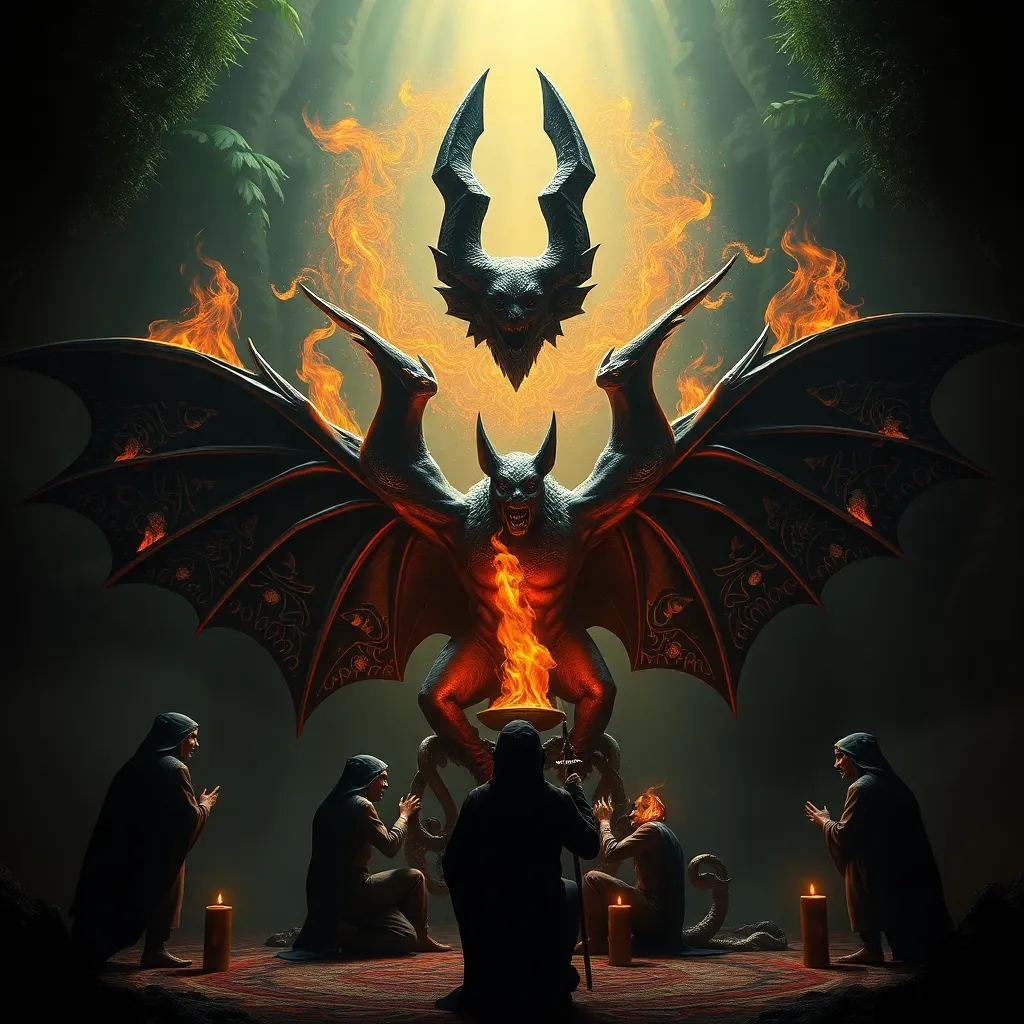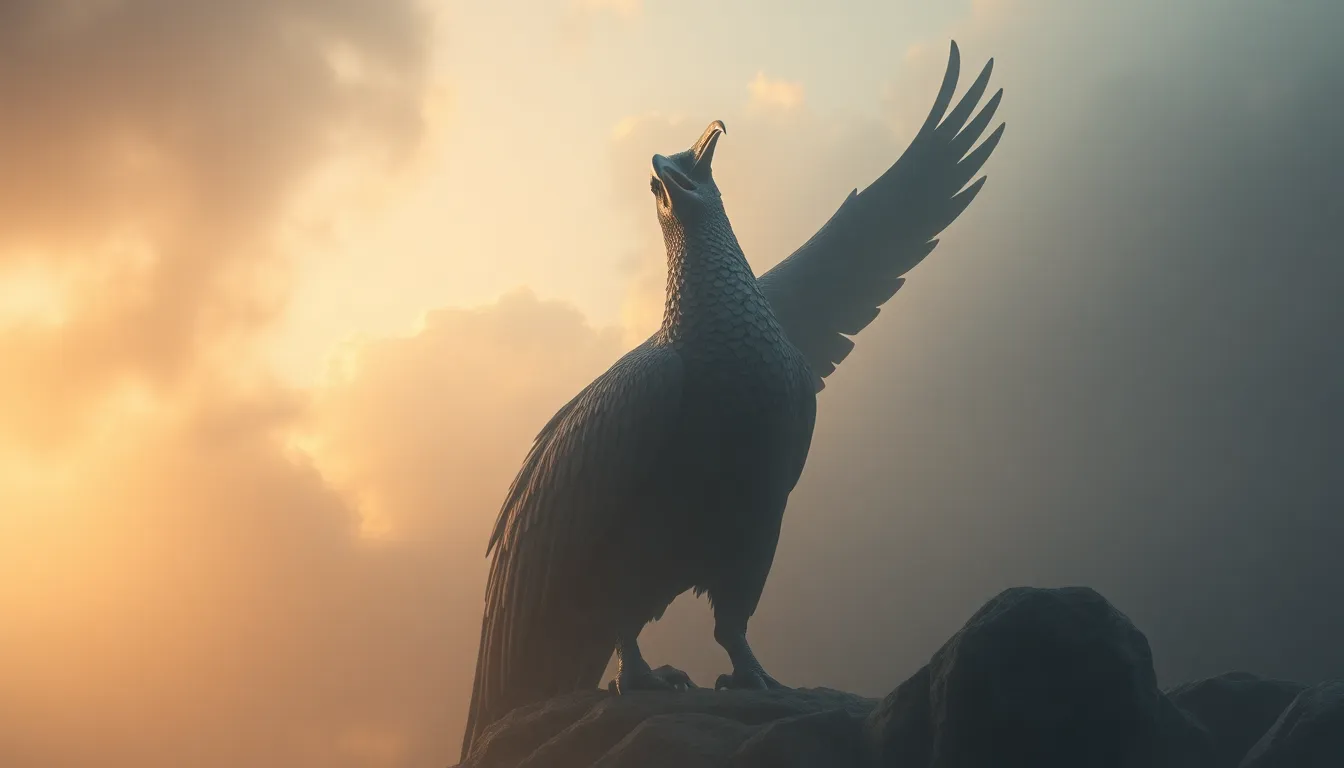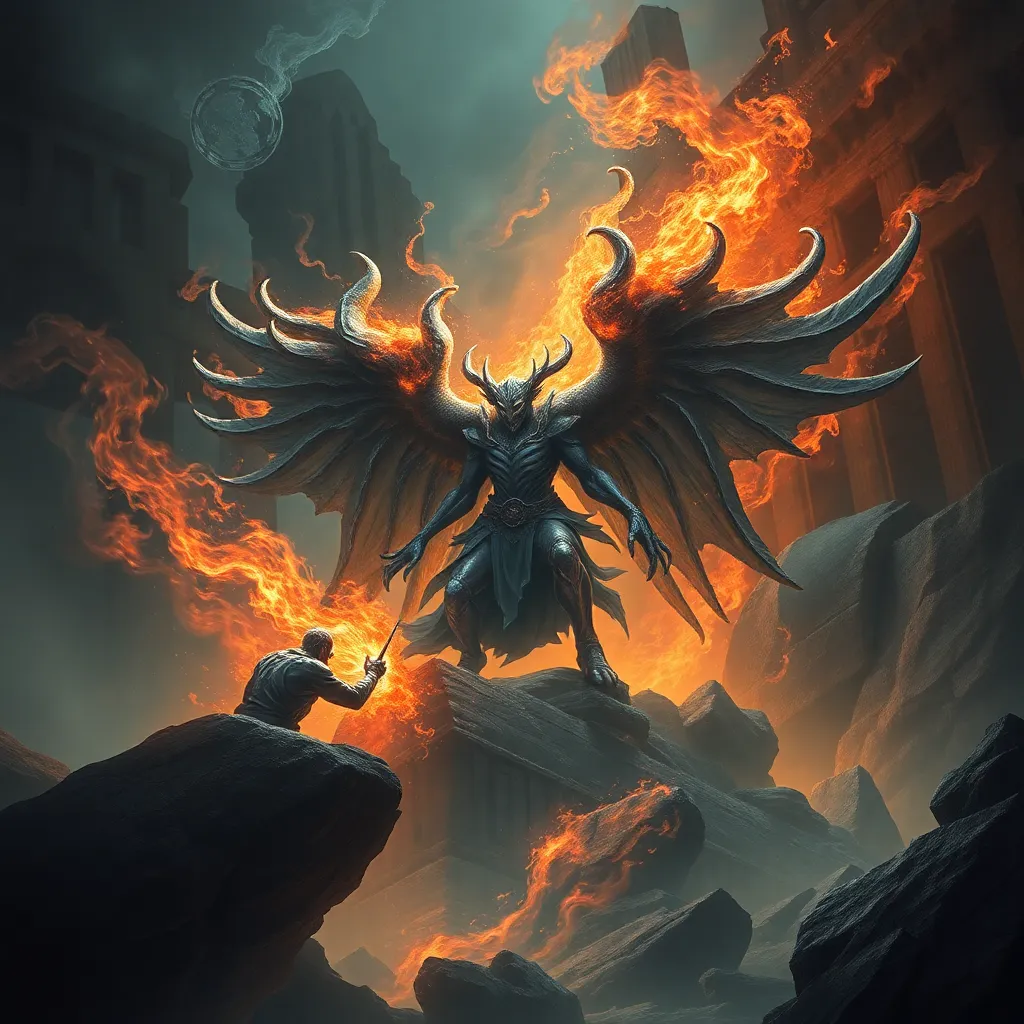The Camazotz Ritual: Unraveling the Mystery of the Bat God’s Sacrifice
I. Introduction
The figure of Camazotz, the Bat God, occupies a significant place in Mesoamerican mythology, particularly within the traditions of the Maya. As a deity associated with the night, death, and sacrifice, Camazotz embodies complex themes that resonate deeply within the cultural narratives of ancient Mesoamerican societies. This article aims to explore the rituals associated with Camazotz, shedding light on their cultural importance and the beliefs that surround them.
II. Historical Context of Camazotz
A. Origins of the Bat God in ancient Mesoamerican cultures
Camazotz is believed to have originated in the mythology of the Maya civilization, where he was depicted as a powerful creature with the ability to traverse between the worlds of the living and the dead. His name translates to “Death Bat,” encapsulating his dual role as both a harbinger of death and a symbol of rebirth.
B. The role of Camazotz in mythology and folklore
In various myths, Camazotz is portrayed as a guardian of the underworld, often involved in the creation stories that describe the origins of humanity. His presence underscores the belief in the cyclical nature of life and death, where death is not an end but a transformation.
III. The Symbolism of the Bat in Mesoamerican Culture
A. Cultural interpretations of bats in various Mesoamerican societies
Bats held different meanings across Mesoamerican cultures. In Maya mythology, they were seen as messengers between realms, while in Aztec culture, they were often associated with fertility and the nocturnal aspect of life.
B. The dual nature of bats: life, death, and transformation
The bat’s ability to navigate darkness symbolizes the journey through fear and uncertainty, representing both life and death. This duality is reflected in the rituals dedicated to Camazotz, where the bat’s transformative power is both revered and feared.
IV. The Camazotz Ritual: Practices and Beliefs
A. Description of the rituals performed in honor of Camazotz
The rituals dedicated to Camazotz were elaborate ceremonies that often took place during significant lunar phases or agricultural cycles. These rituals included offerings of food, flowers, and, in some cases, sacrifices to appease the Bat God.
B. Participants and their roles within the ritual
Rituals involved various participants, including priests, shamans, and community members. The priests played a central role, performing chants and invocations to invite Camazotz’s presence. Community members often contributed through offerings and communal prayers.
C. The significance of sacrifice in the rituals
Sacrifice was a crucial component of the Camazotz rituals, believed to ensure favor from the Bat God. Participants sought blessings for fertility, health, and protection from misfortune, reflecting the deep-rooted belief in reciprocity between the gods and humanity.
V. The Nature of Sacrifice in the Camazotz Ritual
A. Types of sacrifices: animal vs. human
There were two primary types of sacrifices associated with Camazotz rituals:
- Animal sacrifices: Typically included offerings of birds, particularly quails and other small creatures, representing the connection to the natural world.
- Human sacrifices: These were reserved for significant occasions, believed to bring about profound transformations and appease the more powerful aspects of the Bat God.
B. The intended outcomes of sacrifices to Camazotz
The sacrifices aimed to achieve several outcomes, including:
- Protection from evil spirits
- Fertility of crops and livestock
- Guidance for souls in the afterlife
C. Comparisons with other Mesoamerican sacrificial practices
The sacrificial practices dedicated to Camazotz share similarities with other Mesoamerican rituals, such as those dedicated to the gods Quetzalcoatl and Huitzilopochtli. All these rituals reflect a deep understanding of the need for balance between human existence and divine favor.
VI. Archaeological Evidence and Findings
A. Key archaeological sites related to the Camazotz rituals
Several archaeological sites in Mesoamerica have yielded evidence of Camazotz rituals, with notable findings in:
- Tikal: Where elaborate carvings and temples dedicated to the Bat God have been discovered.
- Palenque: Featuring murals that depict scenes of bat symbolism and ritualistic practices.
B. Artifacts and inscriptions that provide insight into the rituals
Artifacts such as ceremonial masks, pottery, and inscriptions have been crucial for understanding the rituals associated with Camazotz. These findings provide insight into the iconography and the importance of the Bat God within the cultural framework of the Maya civilization.
VII. Modern Interpretations and Cultural Legacy
A. The impact of the Camazotz myth on contemporary Mesoamerican cultures
Today, the myth of Camazotz continues to influence contemporary Mesoamerican cultures. The Bat God is often referenced in art, literature, and folklore, symbolizing a connection to ancestral practices and beliefs.
B. How the rituals are remembered and practiced today
While traditional rituals may not be practiced in the same form, the essence of reverence for Camazotz persists. Modern celebrations often incorporate elements of the ancient rituals, highlighting the enduring legacy of the Bat God in cultural identity.
VIII. Conclusion
A. Summary of key findings about the Camazotz ritual and its significance
The Camazotz rituals reveal profound insights into the spiritual life of Mesoamerican cultures, emphasizing the importance of sacrifice, community participation, and the duality of existence. Through these rituals, ancient peoples sought to navigate the complexities of life and death, forging a connection with the divine.
B. Reflection on the ongoing fascination with Mesoamerican mythology and rituals
The ongoing fascination with Mesoamerican mythology and rituals, including those associated with Camazotz, underscores a universal human desire to understand the mysteries of existence. By unraveling these ancient practices, we gain valuable perspectives on cultural heritage and the enduring nature of belief systems.



